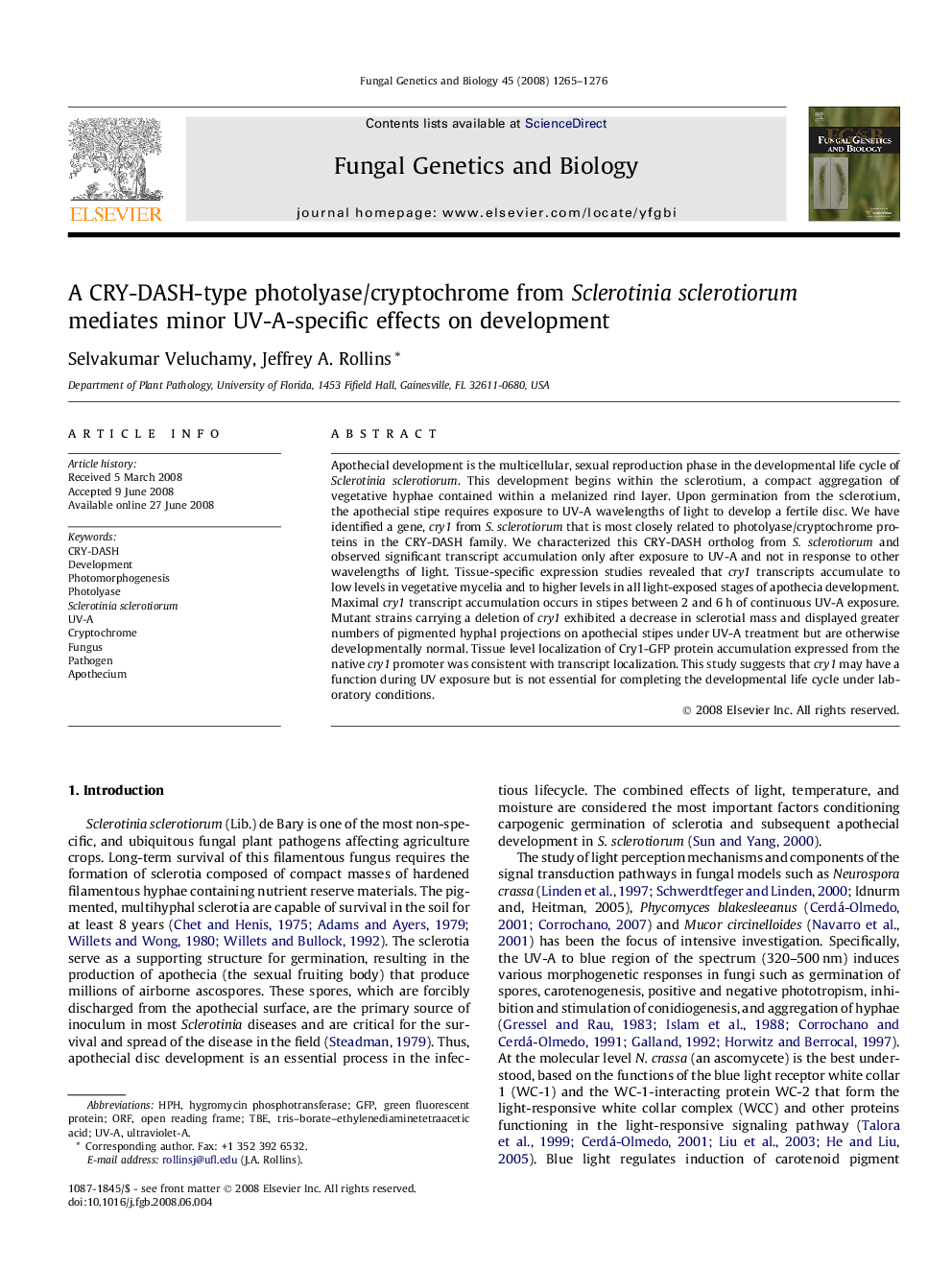| Article ID | Journal | Published Year | Pages | File Type |
|---|---|---|---|---|
| 2181228 | Fungal Genetics and Biology | 2008 | 12 Pages |
Apothecial development is the multicellular, sexual reproduction phase in the developmental life cycle of Sclerotinia sclerotiorum. This development begins within the sclerotium, a compact aggregation of vegetative hyphae contained within a melanized rind layer. Upon germination from the sclerotium, the apothecial stipe requires exposure to UV-A wavelengths of light to develop a fertile disc. We have identified a gene, cry1 from S. sclerotiorum that is most closely related to photolyase/cryptochrome proteins in the CRY-DASH family. We characterized this CRY-DASH ortholog from S. sclerotiorum and observed significant transcript accumulation only after exposure to UV-A and not in response to other wavelengths of light. Tissue-specific expression studies revealed that cry1 transcripts accumulate to low levels in vegetative mycelia and to higher levels in all light-exposed stages of apothecia development. Maximal cry1 transcript accumulation occurs in stipes between 2 and 6 h of continuous UV-A exposure. Mutant strains carrying a deletion of cry1 exhibited a decrease in sclerotial mass and displayed greater numbers of pigmented hyphal projections on apothecial stipes under UV-A treatment but are otherwise developmentally normal. Tissue level localization of Cry1-GFP protein accumulation expressed from the native cry1 promoter was consistent with transcript localization. This study suggests that cry1 may have a function during UV exposure but is not essential for completing the developmental life cycle under laboratory conditions.
